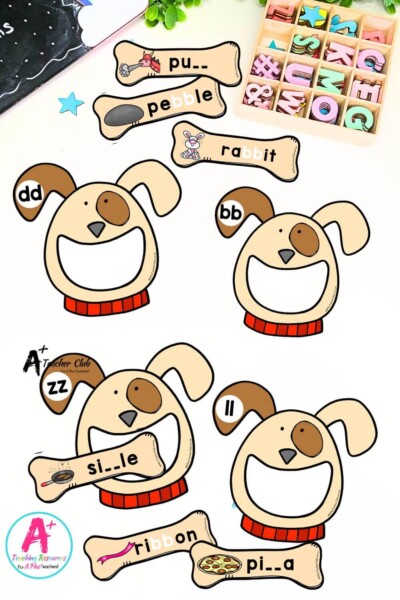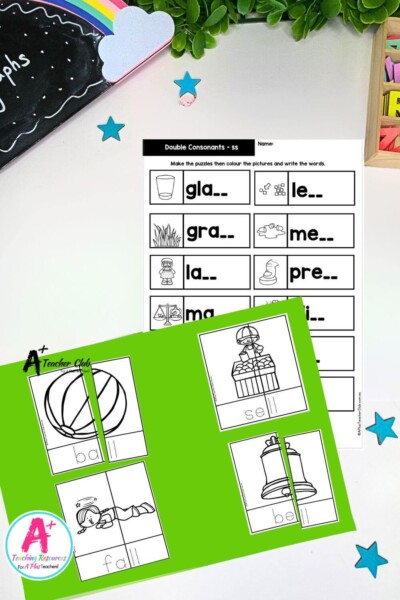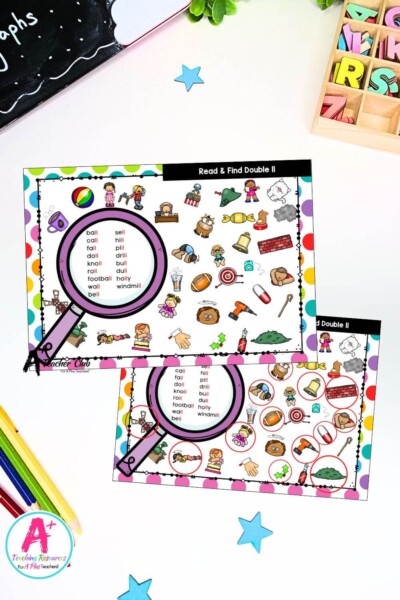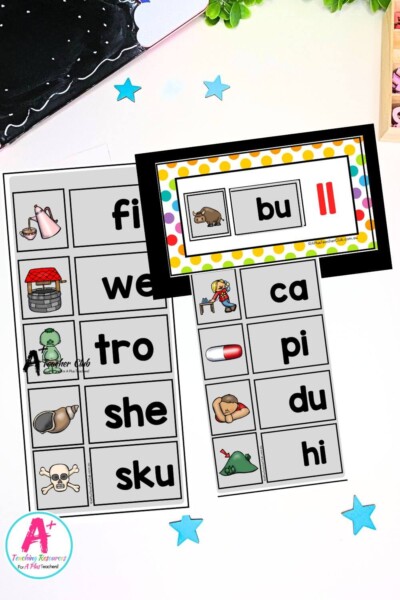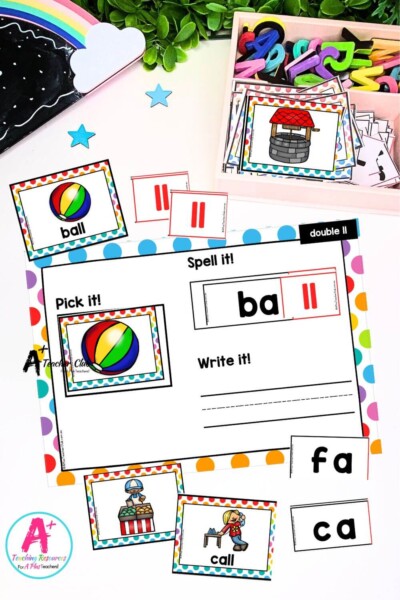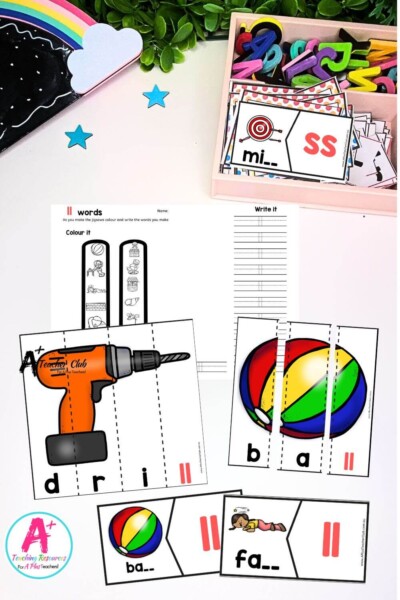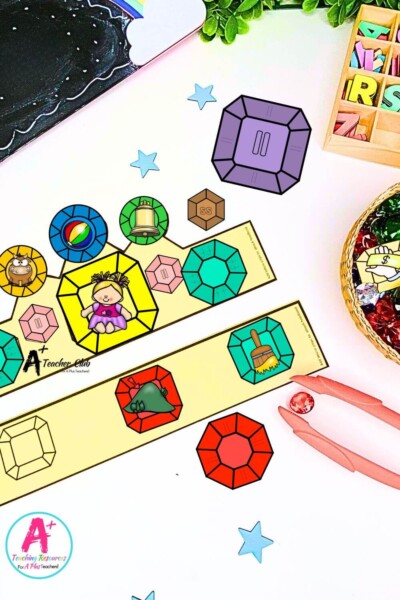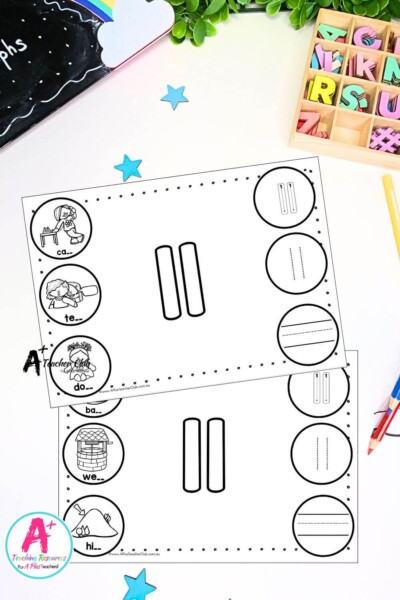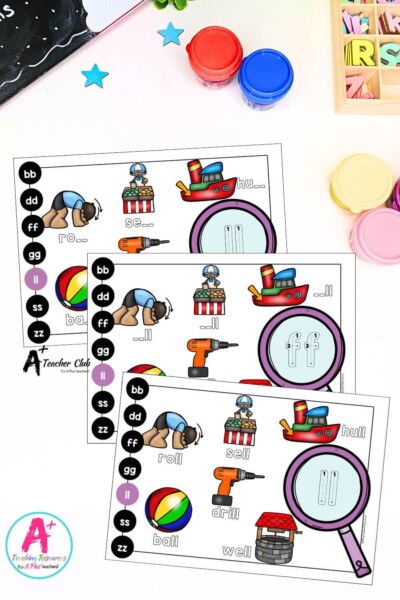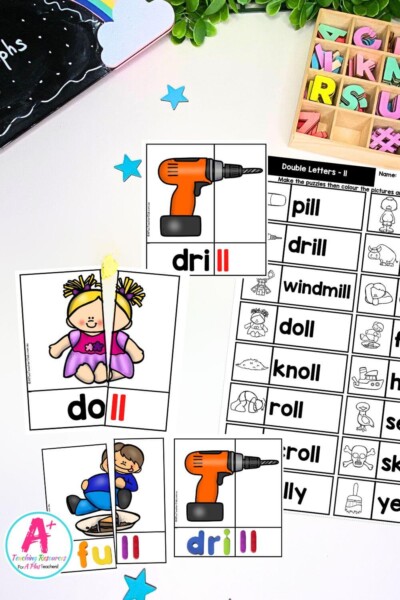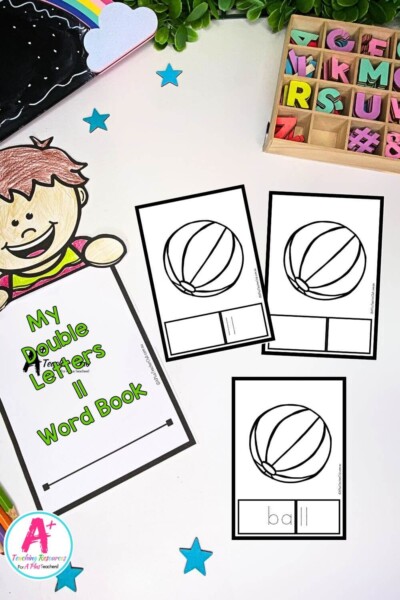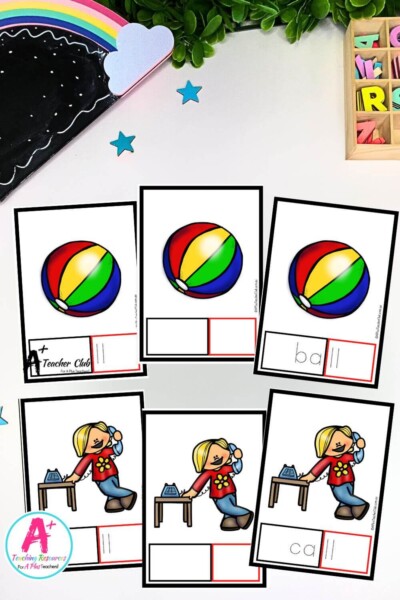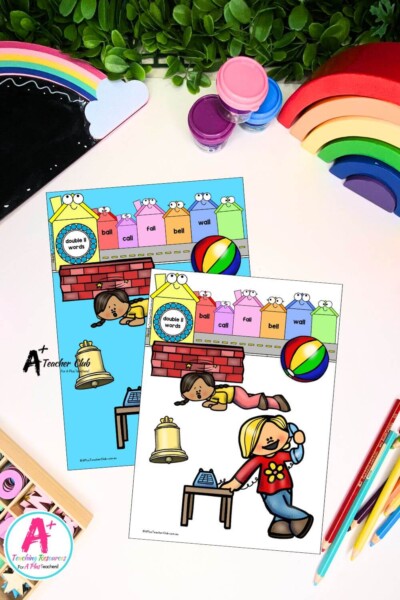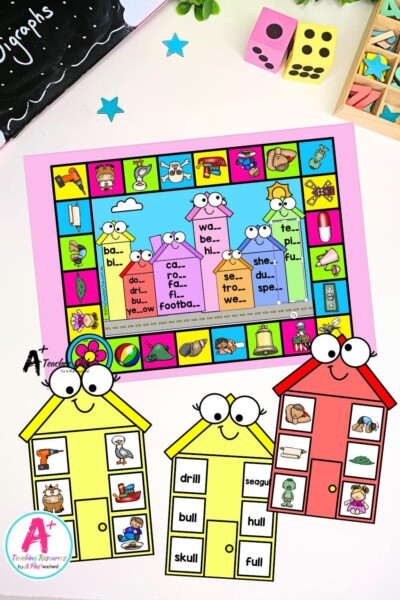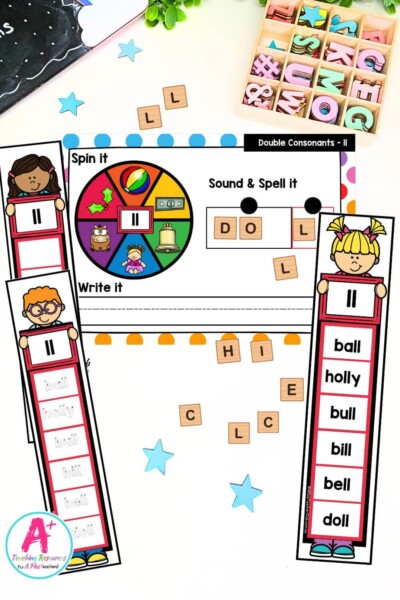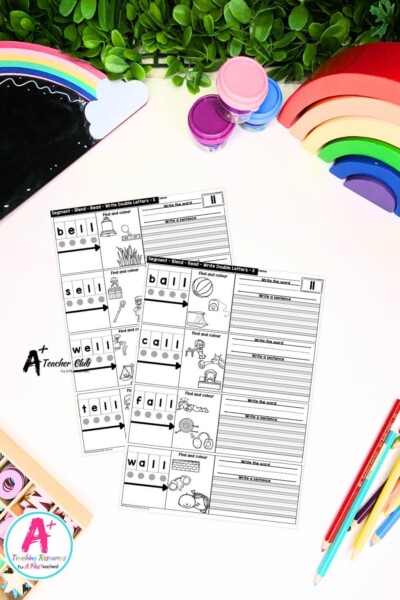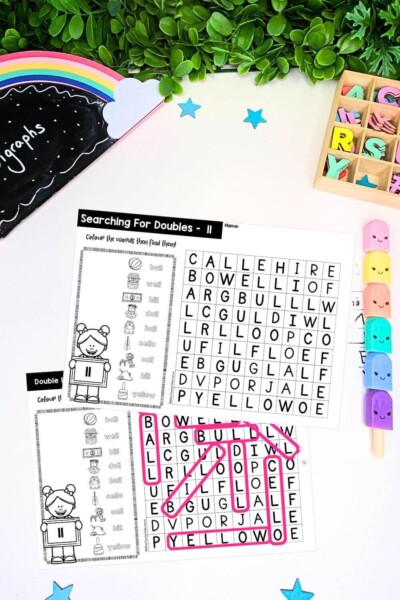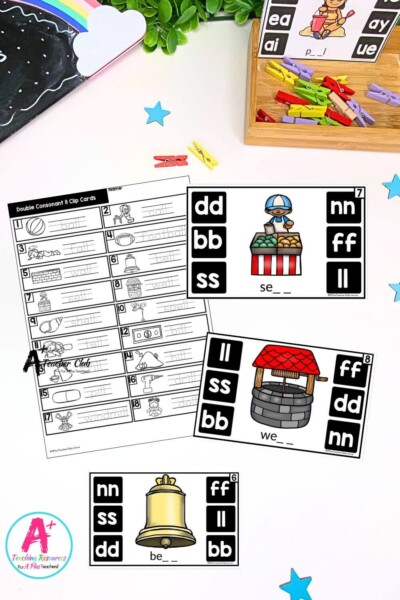Teaching Double Consonants “ll”
Phonics, Spelling, & Grammar Resources
Fun, Easy Strategies & Printables for Early Readers
Teaching double consonants like “ll” can be tricky for young learners, but with the right strategies and resources, it doesn’t have to be!
In this post, you’ll find simple ways to introduce the double “ll”, classroom tips for reinforcing it, and printable activities you can start using today.
Teaching spelling and phonics presents its fair share of challenges, especially when tackling the rules surrounding double consonants “ll.” However, mastering this particular rule is essential for students’ spelling prowess to flourish. In this quick guide, we’ll navigate the intricacies of the double consonant ending rule, offering illuminating examples and addressing any stumbling blocks students might face. Plus, you’ll discover an array of lively and interactive resources designed to assist your learners with conquering the double consonant “ll” words with ease! There are also some handy hints and info for Teaching Double Consonants.
What are Double Consonants?
Double consonants are a fundamental phonics concept where two identical consonant letters appear together in a word. These pairs, also known as consonant digraphs or blends, can be found in the middle or at the end of words.
They play a crucial role in protecting a vowel sound or indicating a specific consonant sound. For instance, in the word “happy,” the double “pp” ensures the short vowel sound of “a” is maintained.
Similarly, “kitten” uses double “tt” to preserve the short vowel sound of “i,” and “tunnel” employs double “nn” for the short vowel sound of “u.”
Understanding double consonants is essential for students to read and spell words correctly, as it helps them recognise patterns and apply spelling rules consistently.
The Double “ll” Consonant Rule FLOSS Rule
Using spelling rules can be a valuable tool for students to grasp the usage of double letters in their spelling and writing endeavours.
When it comes to understanding when and how to incorporate double “ll” in words, two essential rules come into play: the FLOSS Rule and the Double Consonant ‘ll’ Rule, both of which are part of the broader concept of double final consonant endings.
To effectively utilise double “ll” in spelling, students need to grasp the principles outlined in these spelling guidelines.
The spelling rules for using double “l” are as follows:
- After a Short Vowel Sound:
- Double the final consonant “l” in one-syllable words after a short vowel sound.
- Example: “bell” → “belling” (short vowel sound “e”)
- When Adding Suffixes:
- Double the final consonant “l” before adding a suffix if the word has a short vowel sound and ends in a single “l.”
- Example: “tall” → “taller” (short vowel sound “a”)
- To Distinguish Between Words:
- Double the consonant “l” to distinguish between words with different meanings or to clarify pronunciation.
- Example: “well” (in good health) vs. “wel” (the past tense of “will”)
Understanding and applying these rules correctly ensures consistent and accurate spelling when using double “l” in words.
The FLOSS Spelling Rule
The FLOSS Rule is an easier way to help students know when to double a consonant. FLOSS is a mnemonic used to remember when to double the final consonant at the end of one-syllable words after a short vowel sound.
The rule is that in one-syllable words, if a vowel is immediately followed by “f,” “l,” “s,” or sometimes “z,” you double the final consonant, known as double final consonants. This helps keep the vowel short and the pronunciation clear.
Take the word “kill” for instance. We double the “l” because the vowel “i” is immediately followed by “l.” Without the double “l,” the word would be pronounced differently. So, the double “ll” helps us spell words in a way that matches their pronunciation and maintains consistency in English spelling.
Teaching Strategies for Double Consonants
Teaching double consonants effectively requires a blend of explicit instruction, guided practice, and engaging activities. Here are some strategies to help your students master double consonants:
- Introduce the Concept: Begin by clearly explaining what double consonants are and their purpose in words. Use simple language and relatable examples to make the concept accessible.
- Use Visual Aids: Incorporate posters, charts, and diagrams that illustrate double consonants. Visual aids can help students remember the rules and see patterns in words.
- Practice with Words: Provide a list of words containing double consonants and have students practice reading and spelling them. Repetition and practice are key to reinforcing their understanding.
- Engage with Games and Activities: Make learning fun with word searches, crosswords, and puzzles that focus on double consonants. Interactive activities can enhance engagement and retention.
- Differentiate Instruction: Tailor your teaching to meet the diverse needs of your students. Offer extra support for those who struggle and provide challenging activities for advanced learners.By using these strategies, you can create a dynamic and supportive learning environment that helps all students grasp the concept of double consonants.
By using these strategies, you can create a dynamic and supportive learning environment that helps all students grasp the concept of double consonants.
Double Consonant “ll” Word List
“ll” Words Used in our Resources
Common Issues and Confusions
Students may encounter several common confusions and problems when learning the double “ll” rule:
- Overgeneralisation: One common issue is the tendency to overapply the rule to words that don’t require it. Students may mistakenly double the “l” in words where it’s not needed, leading to misspellings.
- Exception Words: Certain words don’t follow the double “ll” rule, leading to confusion for students. For example, words like “dollar” and “pollen” don’t have double “ll” despite having a short vowel sound before the consonant “l.”
- Homophones: Homophones, words that sound alike but have different meanings and spellings, can pose a challenge. Students may confuse words like “bell” (a hollow metal object that makes a ringing sound) with “belle” (a beautiful woman) due to their similar pronunciation.
- Phonetic Awareness: Students may struggle to identify when a word has a short vowel sound followed by a single “l,” which requires doubling the consonant. This lack of phonetic awareness can lead to difficulties in applying the rule accurately.
Addressing these issues through targeted instruction, ample practice opportunities, and reinforcement of the rule’s exceptions can help students navigate the double “ll” rule with confidence and accuracy.
Assessing Student Understanding
Assessing student understanding of double consonants is crucial to ensure they have mastered the concept. Here are some effective assessment methods:
- Phonics Assessments: Use phonics assessments to evaluate students’ ability to read and spell words with double consonants. These assessments can help identify areas where students need additional practice.
- Spelling Tests: Administer spelling tests that include words with double consonants. This will help you gauge their spelling proficiency and reinforce the rules.
- Reading Comprehension: Assess students’ reading comprehension by having them read texts containing double consonant words. This can help you see how well they apply their knowledge in context.
- Observations: Observe students during reading and writing activities to assess their understanding of double consonants. Take note of any difficulties they encounter and provide targeted support.
- Formative Assessments: Use formative assessments to monitor students’ progress and adjust your instruction accordingly. Regular check-ins can help you address any misconceptions and ensure continuous improvement.
By employing these assessment methods, you can ensure that your students have a solid grasp of double consonants and are on the path to becoming proficient readers and spellers.
Conclusion
Mastering double consonants is an essential step in developing strong reading and spelling skills. By using effective teaching strategies and regularly assessing student understanding, teachers can help students build a solid foundation in phonics. Remember to incorporate a variety of teaching methods and assessments to meet the needs of all learners. With the right support and practice, your students will confidently navigate the world of double consonants and enhance their overall literacy skills.
Resources listed in this collection
Click to jump to...-
Double Consonants Feed Me Dogs
-
Double Consonant B&W 2 Piece Puzzles - ll
-
Double Consonant I Spy Read & Find - ll
-
Double Consonant Strip Reader - ll
-
Double Consonant Word Builder - ll
-
Double Consonant Strip Puzzles - ll
-
Double Consonant Crown Craft - ll
-
Double Consonant Writing Mats - ll
-
Double Consonant Playdough Mats - ll
-
Double Consonant Colour 2 Piece Puzzles - ll
-
Double Consonant Student Book - ll
-
Double Consonant Flash Cards - ll
-
Double Consonant Posters - ll
-
Double Consonant Board Game - ll
-
Double Consonant Spin & Spell - ll
-
Double Consonant Worksheets - ll
-
Double Consonant Word Search - ll
-
Double Consonant Clip Cards - ll
Double ll Activities
Explore tags
More Double Consonant Activities
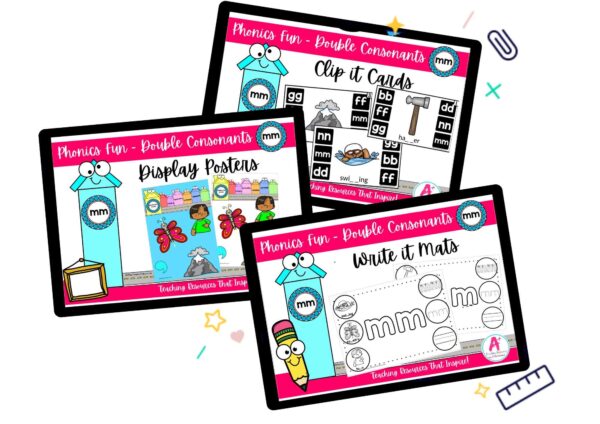
Double Consonants - mm
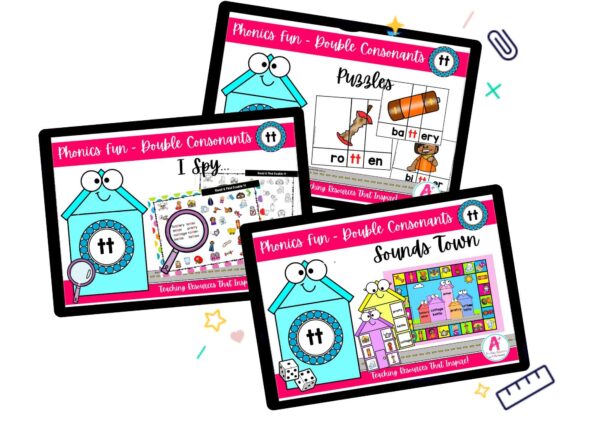
Double Consonants - tt
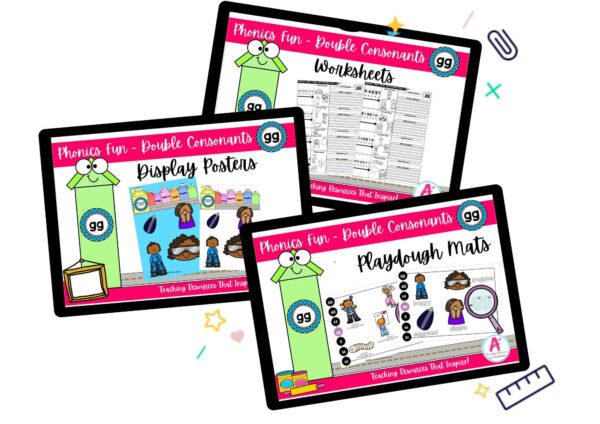
Double Consonants - gg
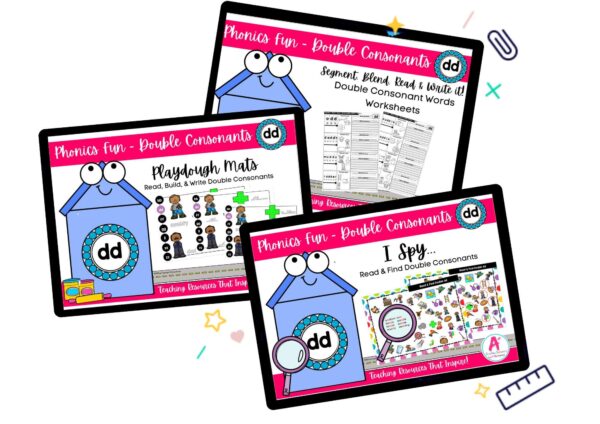
Double Consonants - dd
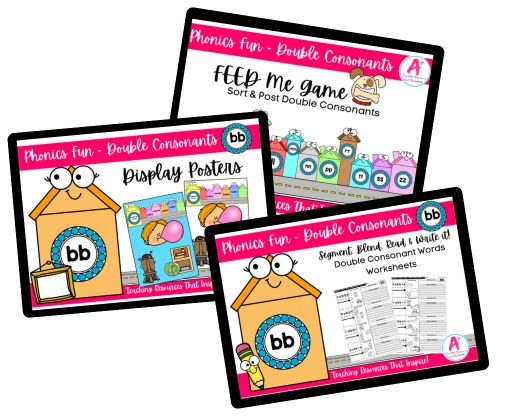
Double Consonants - bb
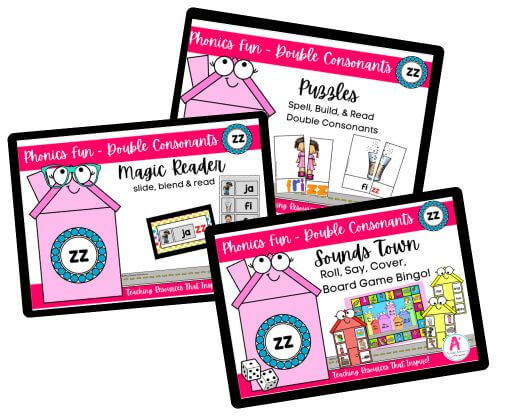
Double Consonants - zz
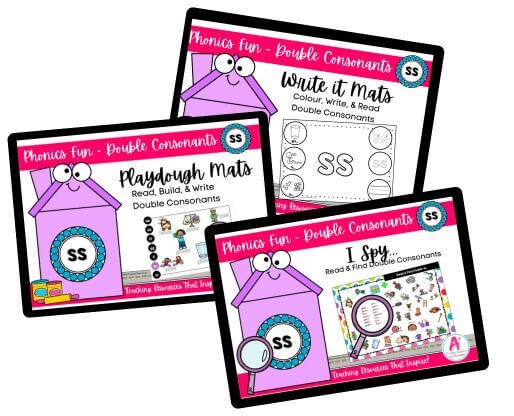
Double Consonants - ss
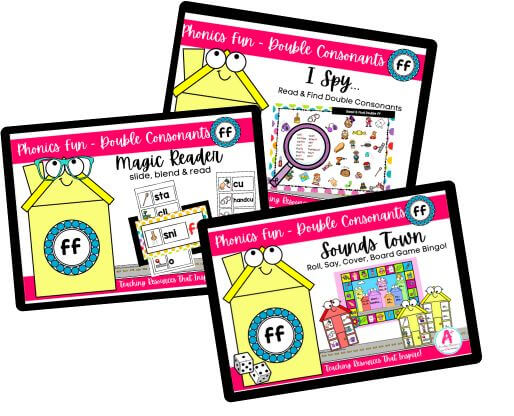
Double Consonants - ff
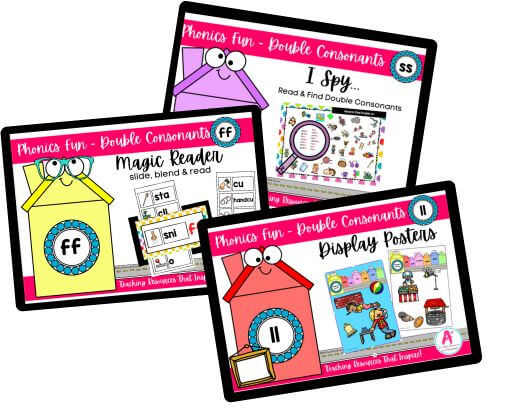
Double Consonants Collections
Can't find what you're looking for?
Send us a request! Use this form to request a resource. Please give details of the learning area, topic, year level, curriculum links. We’ll be happy to take a look to see if we can fit it in. Unfortunately a request does not guarantee we will be able to make it!
"*" indicates required fields

